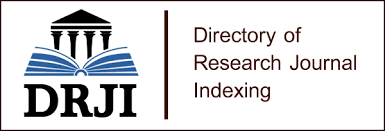Exploring Identity and Space of Hijra: Arundhati Roy’s The Ministry of Utmost Happiness
Abstract
The Ministry of Utmost Happiness is a significant novel by Arundhati Roy, an influential author in Indian writing in English. In this novel, the author addresses the multi-dimensional and multifaceted story of a minority community called hijra. The hijra creates prejudices among all classes of people for their gender identity defined by society, and Roy presents the harsh reality of the hijras in India. Anjum, the main character of the novel, whose previous name was Aftab, is a hermaphrodite. When she is born, she carries a small and unformed girl-part underneath his boy-part. She is therefore treated as a curse to her family and leads her whole life within the margin of the society. The hijras are also males who like to experience a feminine identity. In the novel, there are some other hijras named Bulbul, Razia, Heera, Baby, Nimmo, Mary and Gudiya who have a guru called Kulsoom Bi. As far as gender identity is concerned hijras are neither men nor women; they take female names when they join the community and use female kinship terms as ‘aunty’, ‘sister’, and ‘grandmother’ to address each other, and their communication occurs in feminine intonation and expression. This analytical research explores the identity of hijras who are treated as untouchables and discriminated by family and society. The paper also examines the precarious and reckless state of hijra identity in the mainstream Indian society.
Published
How to Cite
Issue
Section
License
Copyright (c) 2020 Rama Islam

This work is licensed under a Creative Commons Attribution 4.0 International License.
Copyrights for articles published in Journal of Asian and African Social Science and Humanities are retained by the authors, with first publication rights granted to the journal. The journal/publisher is not responsible for subsequent uses of the work. It is the author's responsibility to bring an infringement action if so desired by the author.
Articles published in Journal of Asian and African Social Science and Humanities are published under the Creative Commons Attribution (CC-BY) license, which permits others to distribute, remix, tweak, and build upon your work as long as they credit you for the original creation.
Â















